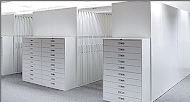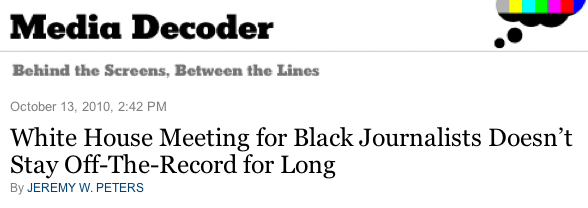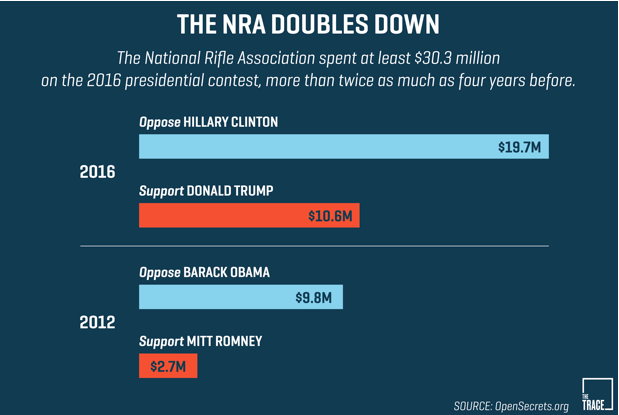As you can see from the picture above, the newer Yoplait design has no tapering but the result is still the same, ONE CANNOT STACK the empty containers inside each other.

Is empty plastic container stackability a big deal? The Image above showcases how Yoplait yogurt empty cannisters would be bundled together, but not stacked, for purposes of recycling or as garbage waste. Would it not be better if these nine empty containers were put inside of one another so they took up a lot less space?
The Yoplait container design means it might take as many as 5 recycling trucks to transport unstackable yoplait yogurt containers that if stackable, could fit in maybe as little as one recycling trash truck. (I am taking an educated guess). On top of that, the non stackable Yoplait yogurt containers will require many many more plastic bags and paper bags to contain them for recycling purposes.
But there is more to this story, which is why efficient recycling is such a difficult task to successfully achieve. Even though the new containers are vastly inferior from a stackability point of view, when the new yoplait containers are being shipped to the stores, Yoplait is actually more efficiently shipping original yogurt product per each shipped box because there is less air in between the yogurt containers.
Did Yoplait Yogurt sell out the environment so they could increase their product shipping weight efficiency? The previously tapered plastic container design, when filled with yogurt and sealed in a shipping box, could not stack as densely as this new design. Yet neither design allows for stackability AFTER the yogurt product is CONSUMED.
Could this be one of those corporate mumbo jumbo, "one hand does what it wants to so it creates better results on paper" even though that corporate hand is actually cutting off three fingers on the other corporate hand that represents another part of the companies less "important" responsibilities involving recycling?
The picture directly above showcases a Yoplait plastic container that is stackable. Ironically, this is a LARGE CONTAINER of Yoplait Yogurt, and in combination with its stackability, may be VASTLY more environmentally friendly than any of the other Yoplait designs.
Once empty, the large yoplait container can be reused in a variety of ways, including as a "seeder" to grow seedlings into small plants for your victory garden. Or, to be used as a small water container so one can use water more efficiently by filling the container and then walking over to the intended watering target, rather than walking an always on water hose that just spews the water every which way.
Is plastic stackability a key component to making recycling more effective and efficient? Manufacturers that use plastics for their smaller products ideally should allow for their product to be recycled by either first being so soft that they can be smashed into a much smaller size, or by being stackable so they can be stored in a more dense state.
Apparently plastic recycling is not considered a good idea and is not really as feasible as we would like to think. What is considered a good idea is plastic "refillability". Can a plastic item be refilled several times before it is discarded, recycled, or reused? If the plastic product can only be used once, before it is discarded, then that apparently is a very inefficient use of that plastic product.
Plastic Recycling only truly occurs when an item can be regenerated into exactly what it already was. Many times what we believe to be recycling is actually a ONE TIME RE-USE of the product into a farther down the recyclability chain container.
Since plastic is rarely if ever used to make the identical plastic component again, the continued demand for new plastic production may never actually go down.
A Yoplait Yogurt container might never comes back again as a Yoplait Yogurt container, nor will it come back as anything else that is as recyclable as it was when it was the Yoplait Yogurt container. If the Yoplait container doesn't end up in a landfill, it could end up being melted into a NON-RECYCLABLE plastic product such as a plastic parking bumper in a parking lot, a plastic wheel barrow, or a big plastic garbage dumpster, used for, ahem, recycling.
But getting back to plastic stackability, besides the issue of recycling our plastics, I believer there is an advantage to making our plastic products stackable so they just don't occupy as much space inside of a big heavy truck that is supposedly taking the plastic for recycling?
What does this have to do with DailyPUMA? In a way it has a lot to do with Daily PUMA. There are huge discussions going on about global warming, carbon credits, and so on. Yet if we can't figure out how to best use plastics, how can we figure out more complex issues?
Which leads me to health care coverage. If our economy relies on indenturing the non rich into overproduction so that enough wealth can be created to pay for health care, we will continue to overuse our share of the worlds resources even as more and more countries reach out wanting theirs. If we cannot create a maintaining economy that provides enough opportunity for everybody, we can't realistically provide health care coverage for all, either.






























 CLICK ON IMAGE TO ENLARGE
CLICK ON IMAGE TO ENLARGE





 CLICK ON IMAGE TO ENLARGE.
CLICK ON IMAGE TO ENLARGE.


































